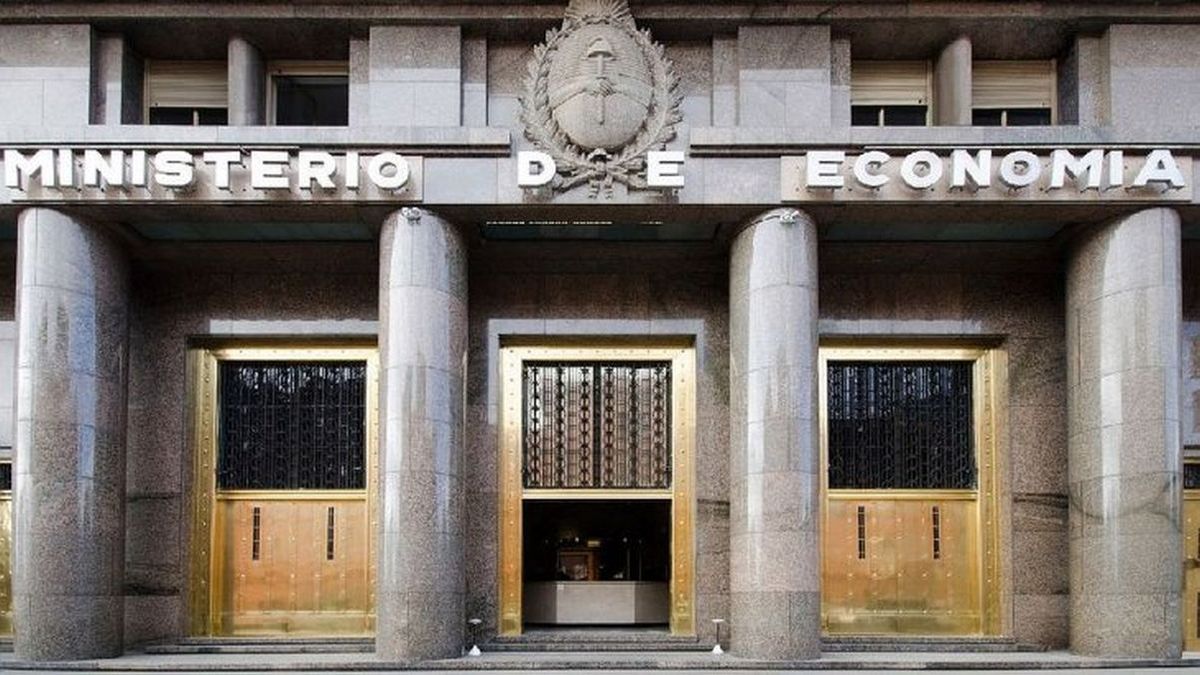The Ministry of Economy will carry out this Thursday a new debt tender in pesos, which will be the last one in April. Over there, will seek to renew maturities for around $2.7 billion, according to private estimates. For this operation, the Central Bank will once again offer liquidity insurance(puts in financial jargon) for banks in some of the titles that the team will place Luis Caputo, with the objective that financial entities can overcome the financing limits to the Treasury that the regulations impose on them.
At the end of the month, the linked TV24 dollar title and the TDA24 dual bond mature, which together add up to commitments of $2.77 trillion, according to numbers from the Congressional Budget Office and estimates from the SBS Group.
With this Thursday’s tender, the Ministry of Finance will try to roll them over and eventually obtain additional funding. In the last auctions, the net financing obtained was used to buy dollars from the BCRA with which to later guarantee the payment of the next bond maturities in foreign currency.
On this occasion, the secretary Pablo Quirno will put on the table two new bills at a fixed rate compounded monthly (LECAP), one expiring in November 2024 and another in March 2025. In addition, the title will reopen dollar linked with zero coupon as of June 2025 (TZV25) and will launch a new BONCER (tied to inflation) with a zero coupon maturing on March 31, 2026. The LECAP will be offered at par and the rate will be defined in the tender. In the case of bonds, it will be the price that is verified.
“The tender shows that Treasury tries to rebuild a fixed rate curve, in a context in which inflation has been experiencing a slowdown, which would have continued in April according to high-frequency data that we monitor. Once again, the focus will be on the LECAP, with an eye on which rates will finally be validated in a framework in which part of the market is betting on disinflation and lower rates in the BCRA reference rate,” considered the SBS Group analysts. .
Debt, BCRA puts and the CER curve
In view of this Economics placement, The BCRA announced that it will offer puts again. These are liquidity insurance for banks that the economic team uses to encourage the migration of holdings of financial entities from the Central Bank’s repos to Treasury securities in search of reducing the stock of remunerated liabilities of the monetary authority. Puts guarantee that banks can execute an option to repurchase the insured securities by the BCRA during a specific time window.
In this case, it will once again offer a limited version of this instrument. On the one hand, they will be available only for the LECAP as of March 2025 and for the BONCER; the other two will not have puts. On the other hand, those who contract them will be able to execute them only during the month prior to the expiration of the insured titles.
That is why in the market they point out that, in reality, The official objective is that the puts serve so that banks can lend to the Treasury above the limits imposed by BCRA regulations.. The thing is that, as recalled in Communication B 12790 issued this Wednesday by the entity chaired by Santiago Bausili, “primary subscriptions of national public securities for which the financial entity has liquidity options sold by the BCRA are excluded from the credit limits with the non-financial public sector.
The truth is that numerous analysts, as Ámbito mentioned, question the use of insurance for banks, considering that they generate a latent debt for the BCRA: in the event of a massive execution, it would be forced to repurchase the Treasury securities and therefore issue money. In fact, some of this was seen in recent days with the execution of bids, another tool that the Central Office uses to dump supply into the secondary market and sustain the prices of the debt curve in pesos.
This Tuesday, for example, The banks appealed massively to the BCRA bids, which ended up issuing around $250,000 million to buy their inflation-indexed securities. Different voices in the market pointed out that what is expected is that it is a business for the entities to obtain profits from an arbitration with the Treasury tender, that is, to sell more expensively to the Central Bank and then buy more cheaply from the Economy.
Thus, before the BCRA’s new put offer became known, economist Alejandro Kowalczuk tweeted: “The Central Bank bought TZXD5 for the equivalent of 3.5% of the Monetary Base. It is time to start thinking about eliminating BCRA puts and bids that ensure BCRA-Treasury arbitrage (I sell BCRA high-I buy primary Treasury).”
Source: Ambito
I am a 24-year-old writer and journalist who has been working in the news industry for the past two years. I write primarily about market news, so if you’re looking for insights into what’s going on in the stock market or economic indicators, you’ve come to the right place. I also dabble in writing articles on lifestyle trends and pop culture news.




